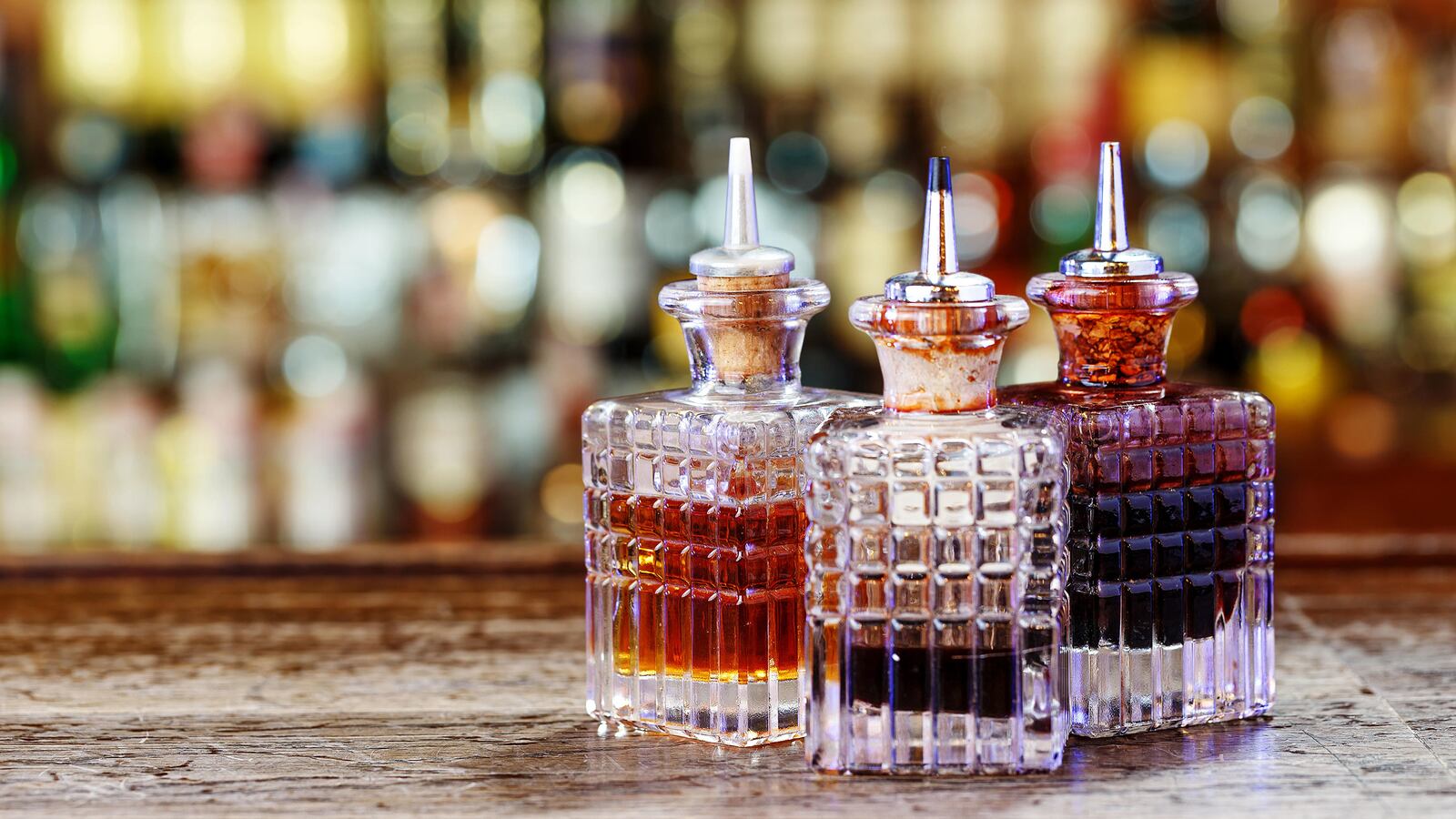To make a classic Manhattan, Old-Fashioned or Sazerac, not only do you need whiskey but also bitters. But what exactly are bitters?
They’re highly concentrated concoctions made of high-proof spirits and other ingredients, including fruits, vegetables, spices, herbs and barks. Bitters have often been described as the “bartender’s salt and pepper”—and for good reason. A couple dashes can work miracles on an otherwise limp cocktail.
These days, alongside the ubiquitous Angostura brand, you can find everything from coffee to walnut to cardamom bitters. One reason there are so many varieties now is that bitters are fairly easy to make; in fact, with the right ingredients and some time, you can make them at home.
“This is definitely a time for at-home experimentation,” says Brad Thomas Parsons, author of the award-winning Bitters: A Spirited History of a Classic Cure-All, with Cocktails, Recipes, and Formulas, which has become something of a bible for bitters lovers.
While bitters can be enormously sophisticated, it helps to remember that they are like miniature cocktails. Each one is a mix of so-called bittering agents, essences of things like angelica root, gentian root and licorice root, and so-called flavoring agents, essences of things like allspice berries, clove and star anise. The bittering agents serve to balance out the concoction and lay down a stage upon which the flavoring agents can dance.
More common spices, fruits or vegetables, like cinnamon sticks, celery, or grapefruit, can, of course, be found at your local grocery store. For the more obscure elements, you’ll have to do some hunting. There are myriad sources online these days, and some have cut their shipping costs during the coronavirus. Many major cities have botanical markets, like Dandelion Botanical in Seattle, Blue Nile Botanicals in Washington, D.C., or Kalustyan’s in New York. No matter where you shop, Parsons suggests you buy whole ingredients rather than ground ones, which makes the straining process a lot easier.
Here are Parsons’ basic directions for creating the tinctures and then his advice for combining them to make bitters:
Add a handful of botanicals to a pint-sized glass jar; you want to put in enough to impart a solid amount of flavor while leaving room for the alcohol. Next, fill the jar with high-proof neutral grain spirit or vodka. “For the most effective extraction,” says Parsons, “you want as high a proof as you can get. Scientifically, the infusion rate is going to be much slower with a lower proof, but the quality is going to get poorer, too.”
Parsons noted that his neighborhood liquor store still has 160-proof Devil’s Springs Vodka in stock. “That would be good to use,” he said, adding: “You could always use standard vodka, and if it isn’t high-proof you would just need to extend the duration of your maceration.”
Also, you may want to break up the botanical a bit, to create more surface area. Cover the jar and shake. Let stand in a cool, dark place for two weeks, shaking the jar daily. Don’t forget to label the container!
Strain the infused alcohol into a clean one-quart glass jar through a cheesecloth-lined funnel. Squeeze any alcohol from the cheesecloth into the jar, then strain the infused alcohol, again, through a new cheesecloth into a clean jar to remove any remaining sediment. Cover the jar and set aside for another week, shaking daily.
Smell the tincture regularly—if it produces the intended scent, you know it’s ready. The best method for smelling bitters is to place a couple of drops on your palm, rub your hands together and then inhale. Some recipes take just a few days, others take several weeks—depending on the botanical or alcohol proof level. But for most tinctures, three weeks will do the trick.
When it’s ready, strain the mixture through a cheesecloth-lined funnel set over a clean glass jar; discard the solids. If necessary, strain again to remove any remaining sediment—you may need to employ a coffee filter for removing particularly pesky sediment. Cover and let stand at room temperature for three days. Then once again pour the tincture through a cheesecloth-lined funnel or strainer and transfer to glass dasher bottles. Cover and keep in a cool, dark place.
The tinctures can be stored at room temperature indefinitely, but they are best used within a year. Parsons suggests you prepare a number of tinctures at the same time—a solid assortment of bittering agents, then a few interesting flavors that you feel will complement a drink. Don’t be afraid to experiment with different combinations!
Parsons suggests starting “small, with droppers and a shot glass. Just make a small little batch to get the template you want…certain level of citrus, a certain level of bark, a certain level of herbal.” Sample the bitters until you like the recipe, taking note of the ratios. “I would do the tinctures in pint mason jars,” says Parsons, “then use a mason jar for the bitters you’re going to make, which would make around four bottles worth, depending what kind of bottles you use.”
Bitters are meant to be strong—they’re not meant to be consumed on their own. However, after you’re finished, if you find the bitters are too strong, you can add a bit of water to bring the alcohol level down.
Now that you’re finished, simply add a dash or two of your signature bitters to your favorite cocktail. Enjoy!

